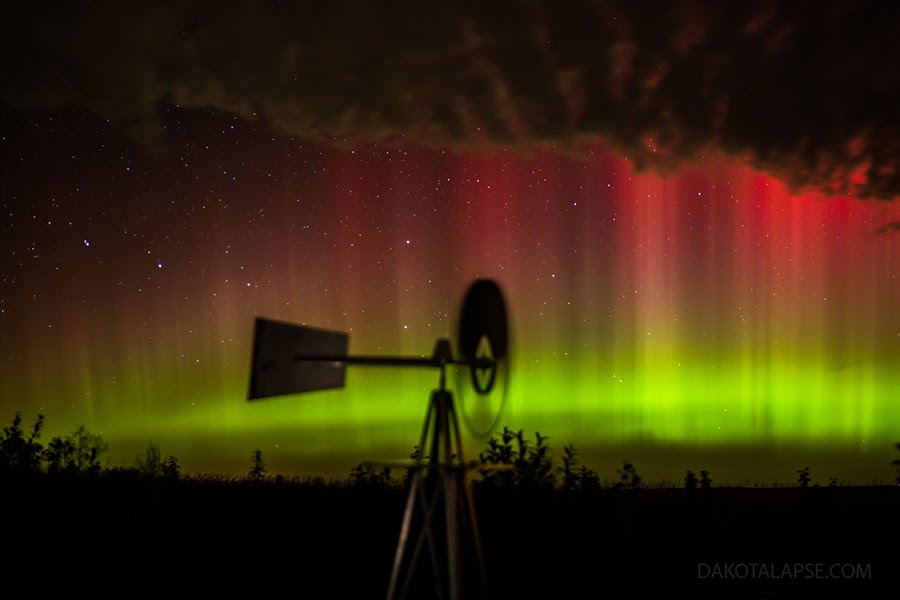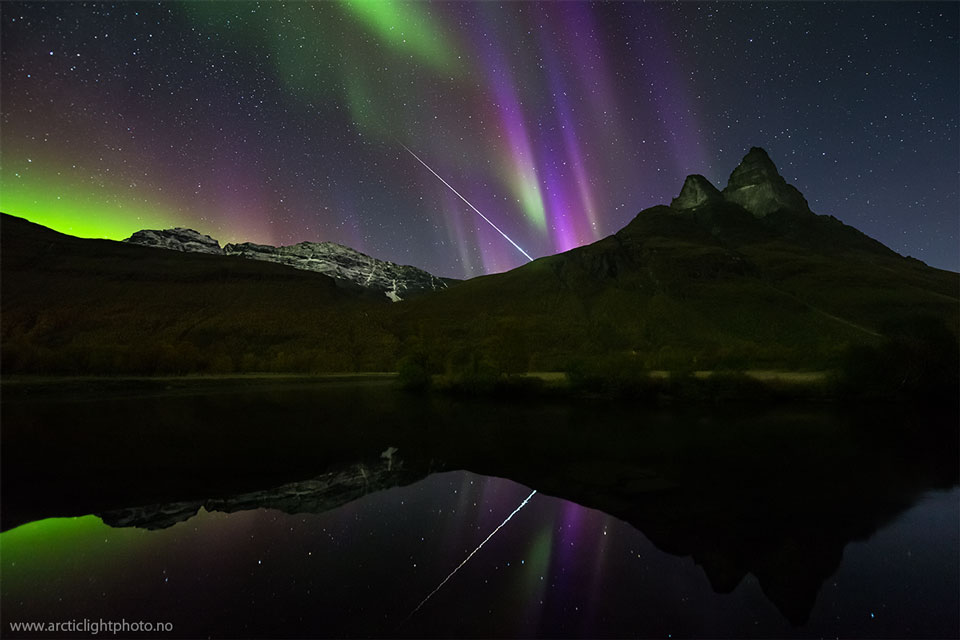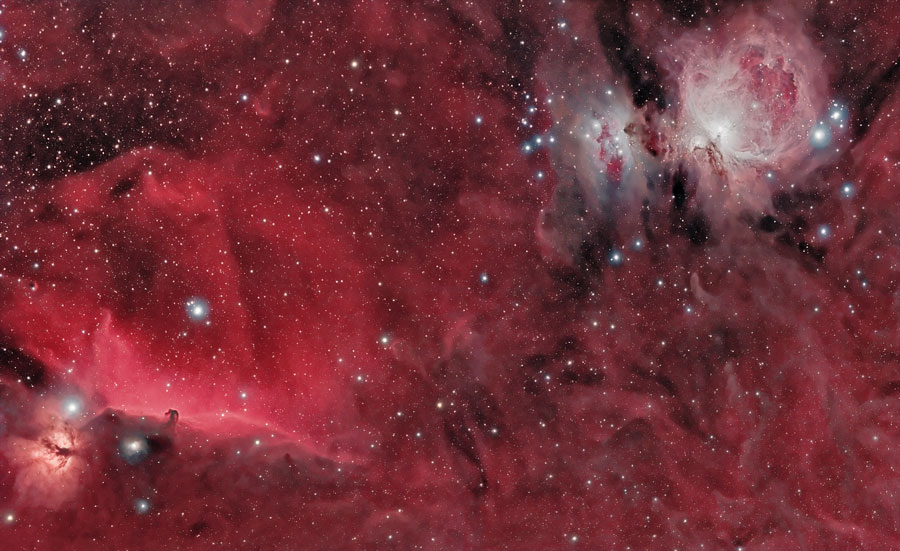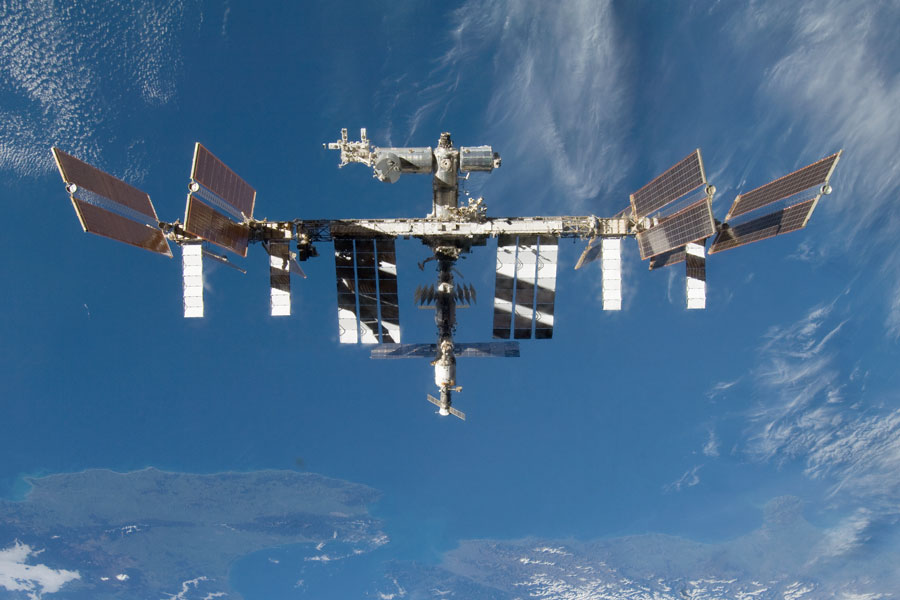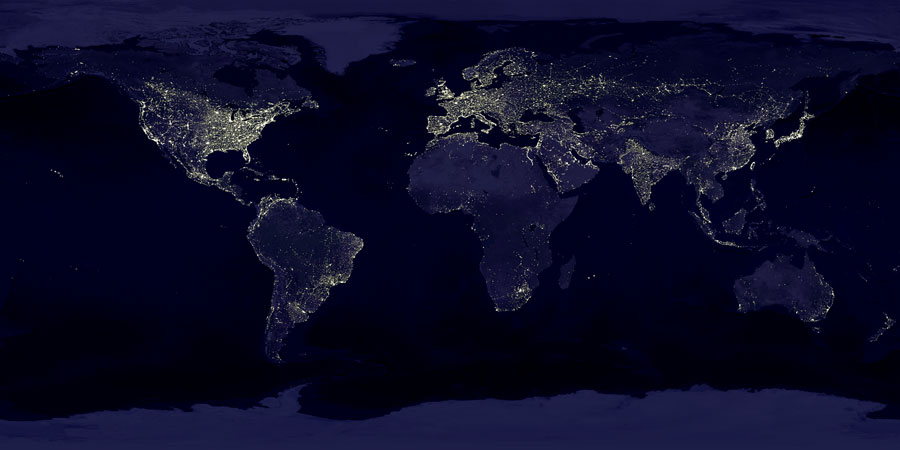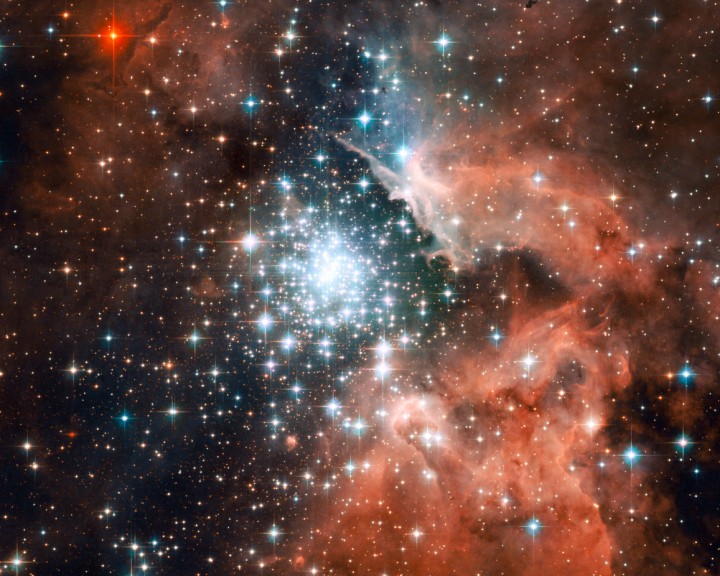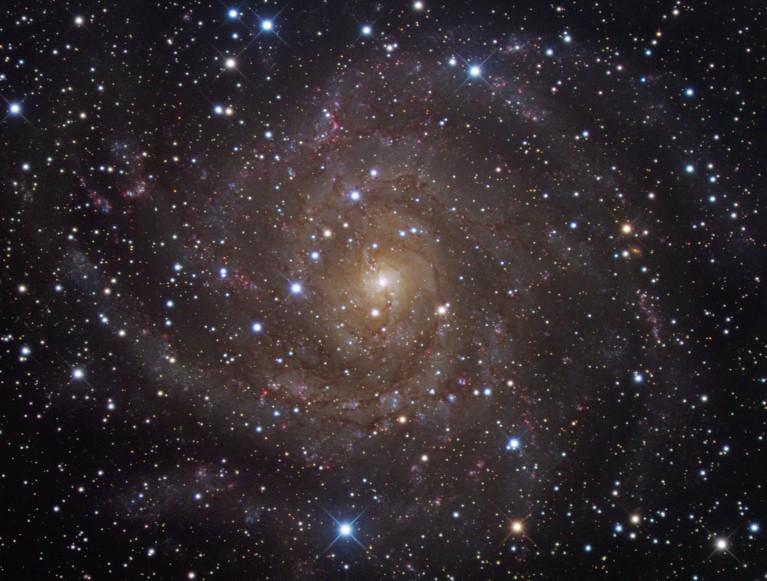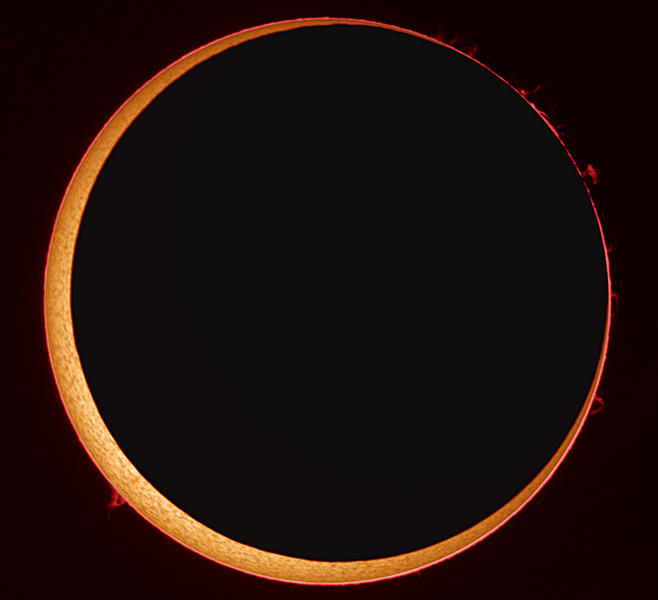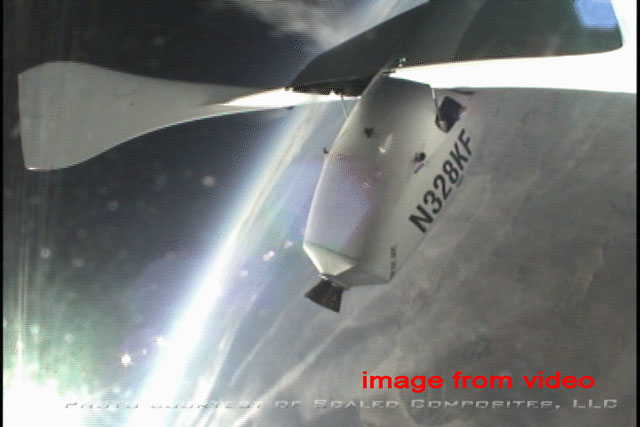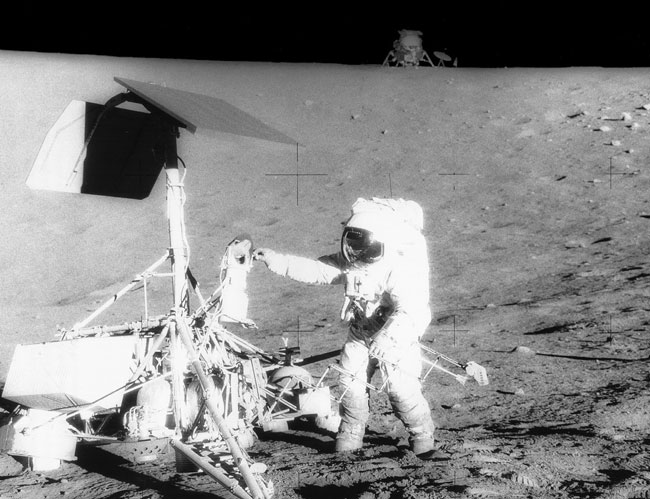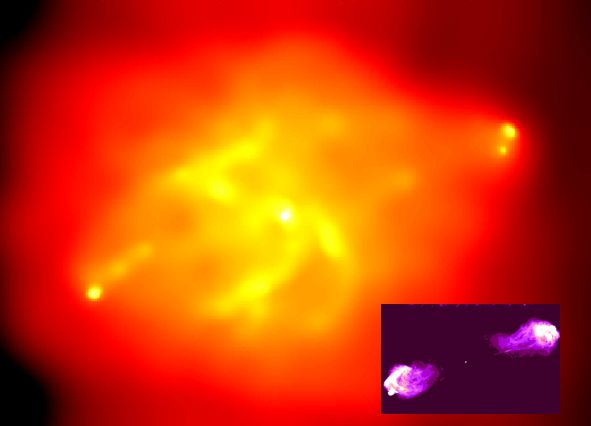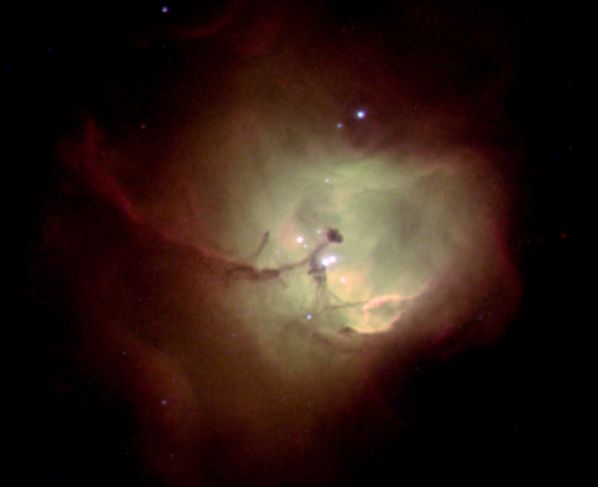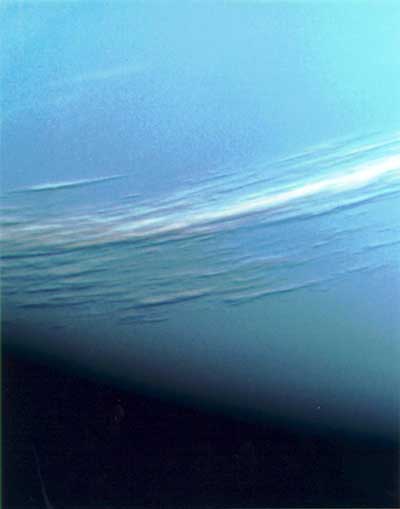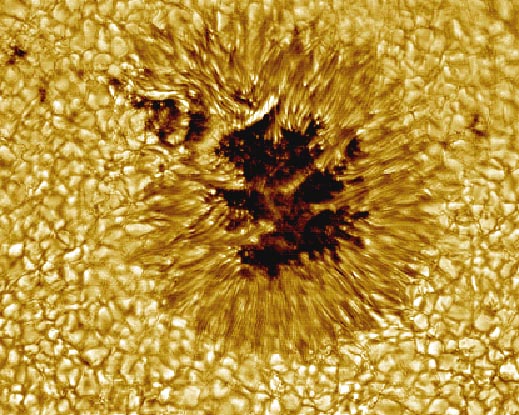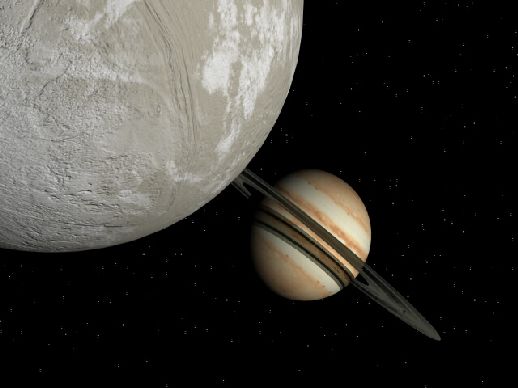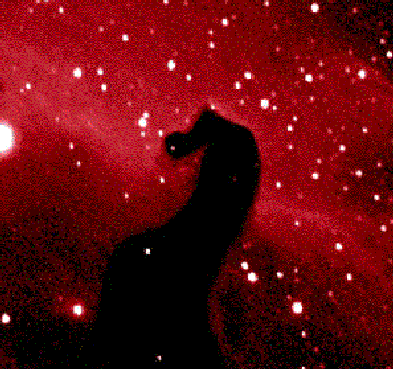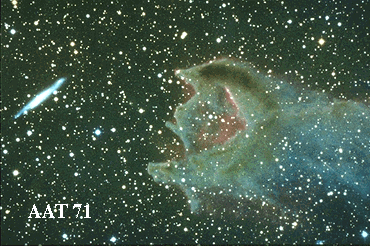[table][tr][td=left]<< Previous[/td][td=center]Index[/td][td=right]Next >>[/td][/tr][/table][/b]
2014
Video Credit & Copyright: Jean-Luc Dauvergne (Ciel et Espace); Music: Valère Leroy & Sophie Huet (Space-Music)
2013 Wind and spaceweather are transformed in this haunting night skyscape. The prairie windmill and colorful auroral display were captured on October 1, from central South Dakota, USA, as a good season for aurora hunters came with longer autumn nights. From green to rarer reddish hues, the northern lights are sparked by the geomagnetic storms caused by solar activity. These extend far above the cloud bank to altitudes well over 100 kilometers, against the backdrop of distant stars in the northern night. Visual double star Mizar, marking the middle of the Big Dipper's handle, is easy to spot at the left edge of the frame. The dipper's North Celestial Pole pointers Merak and Dubhe line up vertically near picture center.
2012 What's happening behind that mountain? A convergence of variable sky spectacles. One night in mid-September near Tromsø, Norway, high red aurora could be seen shimmering through lower green aurora in a way that created a striking and somewhat unusual violet glow. Suddenly, though, the sky flashed with the brightest fireball the astrophotographer had ever seen, as a small pebble from outer space violently crashed into the Earth's atmosphere. The glow illuminated the distant mountain peak known as Otertinden of the Lyngen Alps. The bright meteor, which coincidently disappeared behind the same mountain, was also reflected in the foreground Signalelva River. Although you might consider yourself lucky to see either an aurora or a bright meteor, pictures of them together have been recorded several times previously.
2011
Click to play embedded YouTube video.
Image Credit: SOHO, SDO, NASA, ESA
2010 The dark Horsehead Nebula and the glowing Orion Nebula are contrasting cosmic vistas. Adrift 1,500 light-years away in one of the night sky's most recognizable constellations, they appear in opposite corners of the above stunning mosaic. The familiar Horsehead nebula appears as a dark cloud, a small silhouette notched against the long red glow at the lower left. Alnitak is the easternmost star in Orion's belt and is seen as the brightest star to the left of the Horsehead. Below Alnitak is the Flame Nebula, with clouds of bright emission and dramatic dark dust lanes. The magnificent emission region, the Orion Nebula (aka M42), lies at the upper right. Immediately to its left is a prominent bluish reflection nebula sometimes called the Running Man. Pervasive tendrils of glowing hydrogen gas are easily traced throughout the region.
2009 After undocking, the space shuttle Discovery crew got a memorable view of the developing International Space Station (ISS). Pictured orbiting high above Earth last month, numerous solar panels, trusses, and science modules of the ISS were visible. The Discovery crew brought mission specialist Nicole Stott to the ISS, and returned astronaut Timothy Kopra to Earth. Among the many mission and expedition accomplishments of the Discovery crew included delivering and placing the Fluids Integrated Rack and the Materials Science Research Rack in the Destiny module as well as the Minus Eighty Degree Laboratory Freezer in the Kibo module. Better known, however, was the delivery of the COLBERT treadmill for keeping astronauts fit. Over this past week the Soyuz TMA-16 spacecraft carrying three more astronauts docked with the ISS as Expedition 21 is set to begin. The next shuttle trip to the ISS is currently scheduled for 2009 November 12.
2008 This is what the Earth looks like at night. Can you find your favorite country or city? Surprisingly, city lights make this task quite possible. Human-made lights highlight particularly developed or populated areas of the Earth's surface, including the seaboards of Europe, the eastern United States, and Japan. Many large cities are located near rivers or oceans so that they can exchange goods cheaply by boat. Particularly dark areas include the central parts of South America, Africa, Asia, and Australia. The above image is actually a composite of hundreds of pictures made by the orbiting DMSP satellites.
2007
2006 Similar in size to other large, bright spiral galaxies IC 342 is a mere 7 million light-years distant in the long-necked, northern constellation Camelopardalis. A sprawling island universe, IC 342 would otherwise be a prominent galaxy in our night sky, but it is almost hidden from view behind the veil of stars, gas and dust clouds in the plane of our Milky Way galaxy. Even though IC 342's light is dimmed by intervening cosmic clouds, this remarkably sharp telescopic image traces the galaxy's own obscuring dust, blue star clusters, and glowing pink star forming regions along spiral arms that wind far from the galaxy's core. IC 342 may have undergone a recent burst of star formation activity and is close enough to have gravitationally influenced the evolution of the local group of galaxies and the Milky Way.
2005 On Monday, part of the Sun went missing. The missing piece was no cause for concern -- the Moon was only momentarily in the way. The event was not a total eclipse of the Sun for any Earth-bound sky enthusiast but rather, at best, an annular eclipse, where the Moon blocked most of the Sun. Because of the relatively large distance to the Moon during this Earth-Moon-Sun alignment, the Moon did not have a large enough angular size to block the entire Sun. Those who witnessed the solar eclipse from a narrow path through Portugal, Spain and Africa, however, were lucky enough to see the coveted Ring of Fire, a dark Moon completely surrounded by the brilliant light of the distant Sun. Pictured above is a Ring of Fire captured two days ago in unusually high resolution above Spain. The resulting image shows details of the granular solar surface as well as many prominences around the Sun.
2004 Human space flight has entered the domain of private companies. Previously, large countries like the US and Russia have hired privately owned civilian companies to do specific tasks in support of their public human space flight programs. Yesterday, however, the solely corporate SpaceShipOne soared 100 kilometers above the Earth for the second time in two weeks to claim the coveted $10 million dollar X-Prize put forward by Ansari to inspire private space flight development. The X-prize was modeled after the Orteig prize that was designed to inspire ocean-crossing airplane flights and won by Charles Lindbergh in 1927. The impressive success of SpaceShipOne, designed by a team led by engineer Burt Rutan, could usher in a new age of inexpensive commercial space flights that includes space tourism and an increased presence of humans in space. Scaled Composite's SpaceShipOne is pictured soaring high above the Earth in a practice run last December.
2003 Apollo 12 was the second mission to land humans on the Moon. The landing site was picked to be near the location of Surveyor 3, a robot spacecraft that had landed on the Moon three years earlier. In the above photograph, taken by lunar module pilot Alan Bean, mission commander Pete Conrad jiggles the Surveyor spacecraft to see how firmly it is situated. The lunar module is visible in the distance. Apollo 12 brought back many photographs and moon rocks. Among the milestones achieved by Apollo 12 was the deployment of the Apollo Lunar Surface Experiments Package, which carried out many experiments including one that measured the solar wind.
2002 Amazingly detailed, this false-color x-ray image is centered on the galaxy Cygnus A. Recorded by the orbiting Chandra Observatory, Cygnus A is seen here as a spectacular high energy x-ray source. But it is actually more famous at the low energy end of the electromagnetic spectrum as one of the brightest celestial radio sources. Merely 700 million light-years distant, Cygnus A is the closest powerful radio galaxy and the false-color radio image (inset right) shows remarkable similarity to Chandra's x-ray view. Central in both pictures, the center of Cygnus A shines brightly while emission extends 300,000 light-years to either side along the same axis. Near light speed jets of atomic particles produced by a massive central black hole are believed to cause the emission. In fact, the x-ray image reveals "hot spots" suggestive of the locations where the particle jets are stopped in surrounding cooler, denser gas. The x-ray image also shows that the jets have cleared out a huge cavity in the surrounding gas. Bright swaths of emission within the cavity likely indicate x-ray hot material ... swirling toward the central black hole.
2001 Only a few stars can be found within ten light-years of our lonely Sun, situated near an outer spiral arm of the Milky Way galaxy. But if the Sun were found within one of our galaxy's star clusters, thousands of stars might occupy a similar space. What would the night sky look like in such a densely packed stellar neighborhood? When Roger Hopkins took this picture at the Montezuma National Wildlife Refuge in the Finger Lakes region of western New York, USA, he was struck by this same notion. Appropriately, he had photographed a flock of starlings against the backdrop of a serene sunset. He then manipulated the image so that the black bird silhouettes were changed to white. The final picture dramatically suggests the tantalizing spectacle of approaching night in crowded skies above a cluster star world.
2000 This dramatic Hubble Space Telescope image captures the birth of a cluster of massive stars. The newborn stars are seen just as they emerge from their natal nebula. Only 12 light-years across, the nebula is cataloged as N81 and lies some 200,000 light-years away within a neighboring galaxy known as the Small Magellanic Cloud (SMC). Other nebulae which surround massive star clusters can be a thousand or more light-years across. But, prior to the Hubble observations, it was unknown whether N81 and similar, compact emission nebulae were cradles of single stars or star clusters. In the case of N81, the Hubble data clearly reveal multiple hot stars, some nearly 300,000 times as luminous as the Sun. The colorful image emphasizes graceful arcs of dark interstellar dust and fluorescing gas sculpted by the young stars' energetic winds and radiation.
1999 Two hours before closest approach to Neptune in 1989, the Voyager 2 robot spacecraft snapped this picture. Clearly visible for the first time were long light-colored cirrus-type clouds floating high in Neptune's atmosphere. Shadows of these clouds can even be seen on lower cloud decks. Most of Neptune's atmosphere is made of hydrogen and helium, which is invisible. Neptune's blue color therefore comes from smaller amounts of atmospheric methane, which preferentially absorbs red light. Neptune has the fastest winds in the Solar System, with gusts reaching 2000 kilometers per hour. Recent speculation holds that diamonds may be created in the dense hot conditions that exist under the clouds-tops of Uranus and Neptune.
1998 Sometimes, small regions of the Sun appear unusually dark. Visible above is a close-up picture of a sunspot, a depression on the Sun's face that is slightly cooler and less luminous than the rest of the Sun. The Sun's complex magnetic field creates this cool region by inhibiting hot material from entering the spot. Sunspots can be larger than the Earth and typically last for only a few days. This high-resolution picture also shows clearly that the Sun's face is a bubbling sea of separate cells of hot gas. These cells are known as granules. A solar granule is about 1000 kilometers across and lasts about 10 minutes. After that, many granules end up exploding.
1997 In the last few years, observational astronomy has given humanity evidence of the existence of worlds beyond the solar system. Solar-type stars are now inferred to harbor planets of approximately Jupiter mass - some residing in temperature zones which could conceivably support liquid water and therefore life! Above is a hypothetical scene near one such planet whose sun, 47 Ursae Majoris (47 UMa), is very similar to our own. In our sky, 47 UMa appears as a faint, inconspicuous star below the cup of the "the Big Dipper". (Our own sun would be equally inconspicuous when viewed from 47 UMa ...) Astronomers G. Marcy and P. Butler announced the discovery of a planet associated with this star in 1996 and reported it to have a mass of about 2.4 Jupiters or more with an orbital period of 3 years. This artist's extrasolar vision pictures the detected planet, 47 UMa b, as a gas giant surrounded by a ring of material - analogous to our own gas giant Saturn. In the foreground lies a hypothetical moon of 47 UMa b. Could such a moon support life? 47 UMa is only 44 light years distant, fairly close by astronomical standards - yet there is evidence for planetary systems which are closer still. NASA plans to explore nearby planetary systems using spaceborne observatories.
1996 1500 light years away lies a nebula of quite peculiar shape. How did the dark dust cloud shown above come to be shaped like a horse's head? Nobody knows! Barnard 33, as this region is known to some, is surely a dark dust cloud absorbing the light from the bright red emission nebula behind it. The Horsehead Nebula is also thought to be a region where low-mass stars form. But the reason for gross shapes in the universe is frequently poorly understood. Perhaps there is no simple explanation in this case. Some stars are thought to be efficient creators of dust, while others are much better at destroying it. The Horsehead Nebula's dust distribution might just be the result of a specific irregular distribution of stars and gas in its vicinity.
1995
| << Previous | Index | Next >> |
